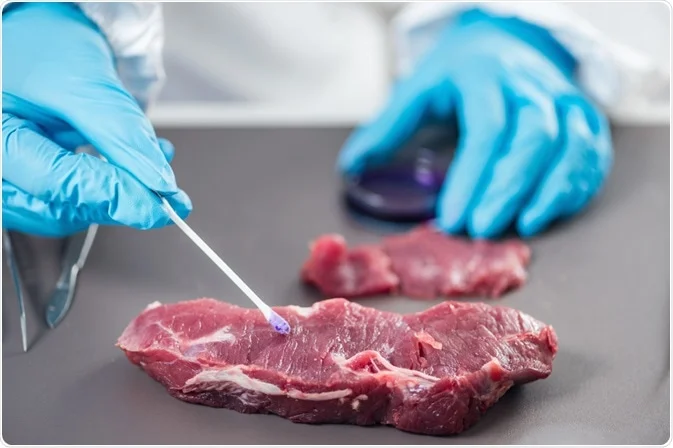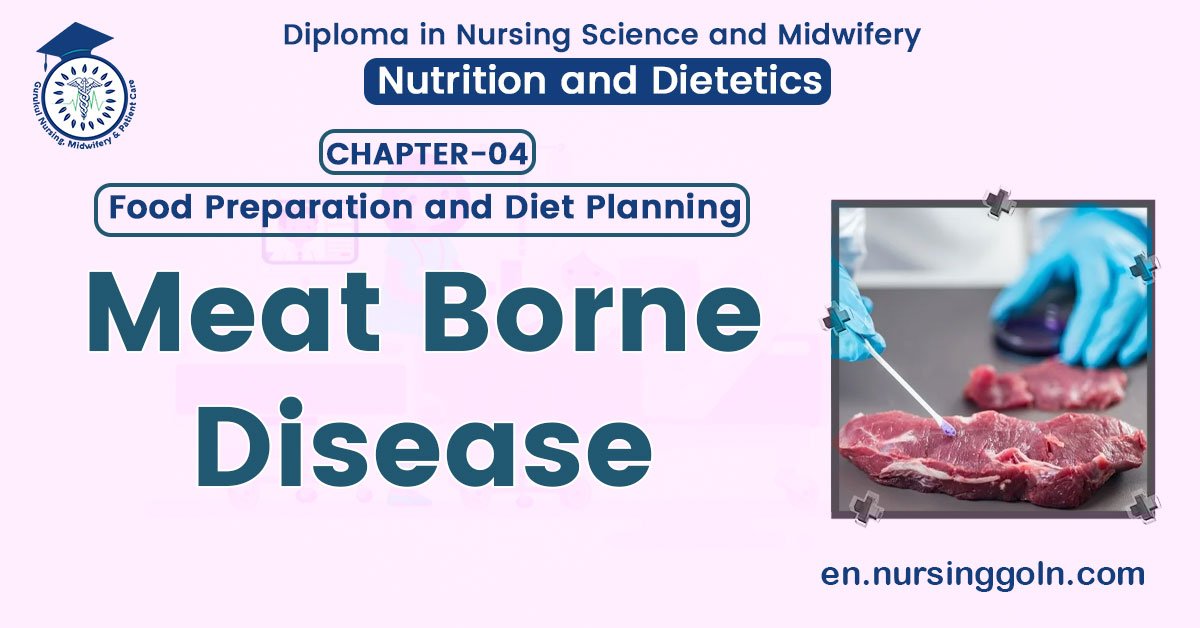Meat borne disease – This book covers the entire syllabus of “Nutrition and Dietetics” prescribed by BNMC-for all Diploma in Nursing Science and Midwifery students. We tried to accommodate latest information and topics. This book is examination friendly setup according to the teachers’ lectures and examination’s questions. At the end of the book previous university questions are given. We hope in touch with the book students’ knowledge will be upgraded and flourished. The unique way of presentation may make your reading of the book a pleasurable experience.

Meat borne disease
Characteristic of good meat:
| 1. Colour: | The meat fibres are deep red in colour. This should not be pale, pink or deep purple. |
| 2. Touch: | The meat is firm and elastic to touch. This should not be greasy or slimy. |
| 3. Appearance: | It has marbled appearance due to fat and acidic reaction” |
| 4. Odour | No Bad odour or oedema. |
| 5. Fat: | The fat should be firm and whitish or yellowish grey in colour. |
| 6. Lymphatic glands: | They should be free from all diseases” |
(Ref: K. Park/24)

Classify meat borne disease
The term “meat” includes various tissues of animal origin. The diseases which may be transmitted by eating unwholesome meat are:
| Tape worm infestations: |
|
| Bacterial infections: |
|
(Ref: K. Park/24)
Fish borne diseases:
1. Fish tapeworm. (Diphylobothrium latum) infestation.
2. Viral hepatitis type A.
3. Water borne diseases e.g., cholera, typhoid”
4. Allergic reactions-urticaria, (particularly with prawns), gastrointestinal irritation.
5. Fish poisoning.
(Ref: K. Park/24)
The signs of fresh fish are:
(Ref: K. Park/24)
1. It is in a state of stiffness or rigor mortis.
2. The gills are bright red.
3. Eyes are clear and prominent.
4. No edema on pitting.
5. No bad smell
(Ref: K. Park/24)

Preventive measures for meat borne diseases:
1. Compulsory inspection of animals before slaughtering and also of carcases by vetenary experts at slaughter houses, which should be public owned.
2. The slaughter houses should be pucca built with proper drainage and free water supply for cleaning. These should be situated away from habitation and dogs, rodents etc., should not be allowed in the vicinity.
3. Persons suffering from infectious diseases should not be allowed to handle meat.
4. Meat at shops must be properly protected from flies.
5. Vehicles transporting meat must be clean.
(Ref: K. Park/24)
Read more:
